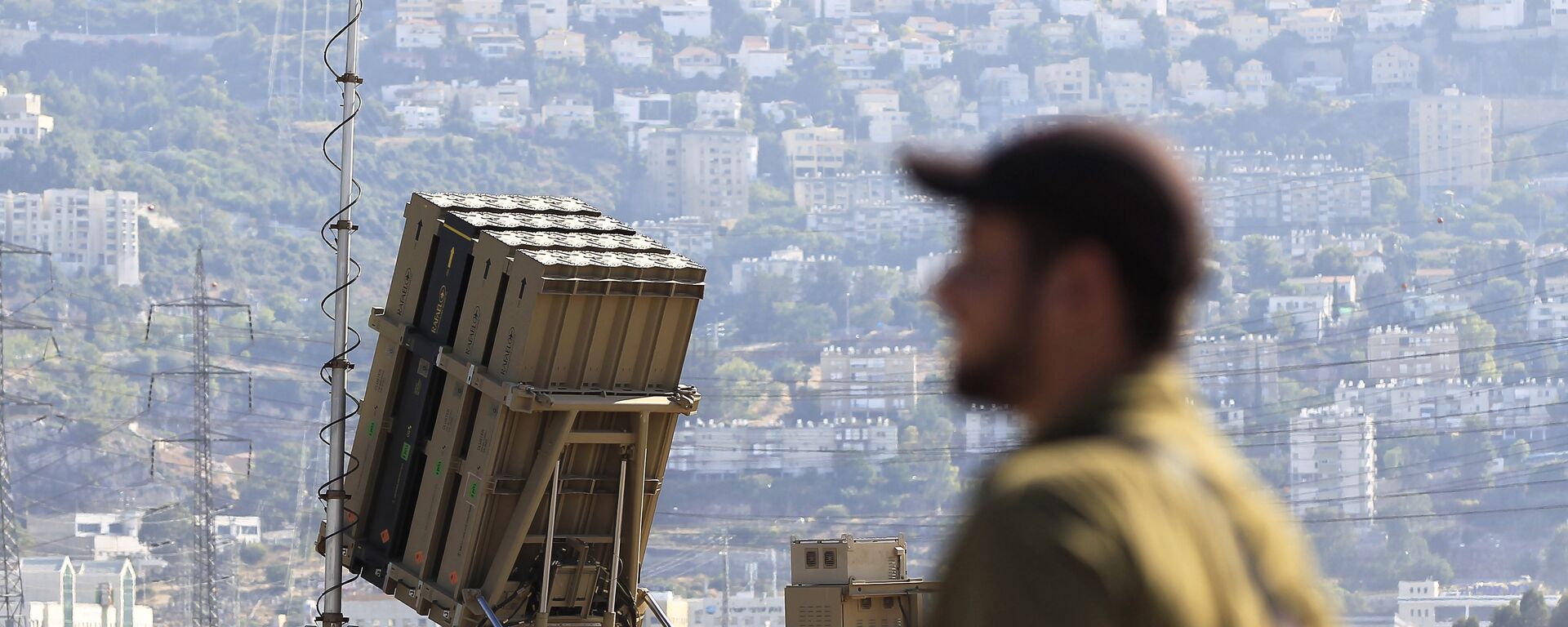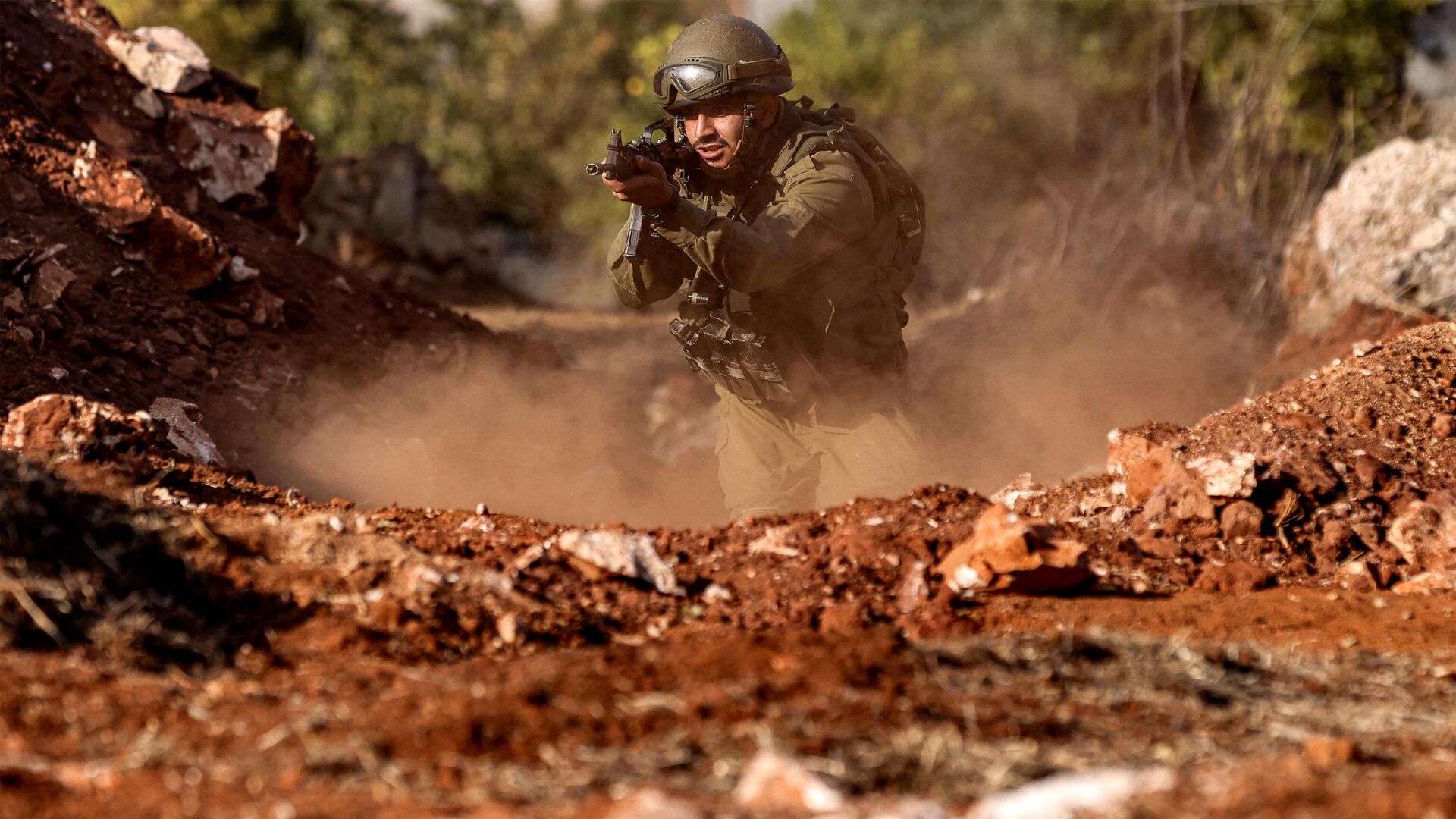https://sputnikglobe.com/20231029/scott-ritter-israel-faces-near-impossible-task-in-gaza-1114561150.html
Scott Ritter: Israel Faces ‘Near Impossible Task’ in Gaza
Scott Ritter: Israel Faces ‘Near Impossible Task’ in Gaza
Sputnik International
Israel has conducted a series of ground incursions into Gaza over the course of the past week, each one building on the other, increasing in scope and scale. This appears to be part of an Israeli strategy to lean gradually into an operation that, when finished, falls just short of a general assault on Gaza.
2023-10-29T12:00+0000
2023-10-29T12:00+0000
2024-06-24T11:17+0000
world
israel
hamas
palestine-israel conflict
gaza strip
israel defense forces (idf)
https://cdn1.img.sputnikglobe.com/img/07e7/0a/1c/1114561409_0:0:3072:1728_1920x0_80_0_0_7be286381e74c4cf9500f130f99405d5.jpg
At the end of the day, however, Israel will most likely not be able to defeat the military forces of Hamas and other Palestinian resistance forces defending Gaza. Israel will have to either seek to defeat Hamas by laying siege to the Gaza Strip or commit to a full-scale attack on Gaza designed to clear the territory of all Hamas fighters.History suggests that any such assault will be extremely difficult to accomplish.The example of Operation Hubertus, the final German assault on Stalingrad, stands out. The Germans brought in elements of seven elite “Pioneer” battalions — combat engineers with extensive experience in urban warfare, having paved the way for prior German victories in Rostov and Voronezh. The Pioneers were the masters of military demolition, highly trained specialists in house-to-house fighting and the use of explosives and flame throwers. Around 1,800 of these elite assault engineers were assembled for the final drive to push the defending Soviet soldiers from Stalingrad.Operation Hubertus was doomed to fail from the beginning. According to an account of the fighting, “The constant bombardment and artillery shelling created a battlefield in which the Soviet defenders largely held the advantage over the assaulting Germans. The fields of rubble and craters were perfectly designed for defensive actions and could be improved with relatively little effort. This also provided ample hunting ground for the ever-present Soviet snipers.”A similar observation can be made regarding the Allied attacks on Monte Casino, in Italy, in early 1944. A massive aerial bombardment destroyed a 6th century abbey. Elite German paratroopers dug into the rubble, and for months successfully held off repeated attacks. There can be no doubt that the excessive bombardment of Monte Casino ended up strengthening the positions of the German defenders.In the battle of Iwo Jima, it took US Marines more than a month to secure the tiny island, largely because the Japanese had dug some 18 kilometers of tunnels into the 21-square kilometer island, some of which were more than 70 meters underground, from which they rode out heavy bombing and shelling, only to emerge and ambush the advancing Marines.If one combined the above ground rubble of Monte Casino with the below-ground tunnel network of Iwo Jima, you might approximate the hellish scenario awaiting Israel in Gaza.Over 500 kilometers of tunnels dug in under the 360 square kilometers that comprise the Gaza Strip, these tunnels are purpose built, designed to serve as transportation corridors, command centers, supply depots, dormitories and hospitals, defensive positions, and in support of offensive action. Simply put, there has never been a military operation against a target such as the one presented by Hamas in Gaza.Israel has trained a small number of its elite special forces to carry out limited-scope operations in an underground environment. These operations, typically involving hostage rescue or direct action (i.e., eliminating a high value target), are conducted under very controlled circumstances, with the attacking forces proceeding only when the circumstances support a favorable outcome. As such, the experiences of these troops are counterproductive when it comes to transferring knowledge to the conventional forces that would bear the brunt of any Israeli assault on Gaza.If Israel does not sync its above-ground actions with a simultaneous effort to defeat Hamas’ underground tunnel-based defenses, then the situation above ground will become even more precarious, with Hamas emerging from tunnels behind the Israeli forces, cutting them off and inflicting heavy casualties. But Israel is going to be operating largely blind underground, probing into a tunnel network designed by Hamas to protect against any such effort. Israel’s best bet would be to simply locate tunnel entrances and seal them off, leaving the Hamas forces underground to die of thirst, hunger, oxygen deprivation, or disease. But this will require the physical occupation of every square meter of the city, an immensely difficult problem from both a logistical and operational standpoint. It will also expose more Israeli forces to harm, resulting in a dramatic increase in casualties.By reacting to the Hamas attack of October 7 in the way it has, Israel has literally walked into a trap designed by Hamas to defeat any Israeli incursion. Israeli forces are neither trained, equipped, organized, nor motivated to carry out the kind of brutal, bloody, and physically demanding combat that will be required to defeat Hamas above and below the ground in Gaza. Israeli political and military leaders have boxed themselves into a corner with their aggressive winner-take-all rhetoric. But now that the time has come to pay the price of their collective verbiage, the question becomes is this a price Israel is willing and able to pay?The answer is probably no. Israel has defined victory as being predicated on the total defeat of Hamas as a military organization. This is most probably a mission impossible. Hamas, therefore, emerges victorious simply by surviving. Given the strong defensive position Hamas finds itself in, through a combination of its immense tunnel network and the destroyed urban environment brought on by Israeli bombardment, it is highly likely that Hamas will be able to hold off a concerted Israeli assault until which time the Israel Defense Forces, like the German Pioneer battalions in Stalingrad, exhaust themselves on the field of battle.
https://sputnikglobe.com/20231028/destroying-hamas-gaza-tunnels-is-israels-main-attacking-vector---military-expert-1114552608.html
https://sputnikglobe.com/20231028/how-former-israeli-soldier-turned-anti-war-after-witnessing-2014-gaza-invasion-1114562542.html
israel
gaza strip
Sputnik International
feedback@sputniknews.com
+74956456601
MIA „Rossiya Segodnya“
2023
Scott Ritter
https://cdn1.img.sputnikglobe.com/img/07e6/0c/17/1105733958_0:0:334:334_100x100_80_0_0_b457e4e9c850ef224b0cc79059bb38df.jpg
Scott Ritter
https://cdn1.img.sputnikglobe.com/img/07e6/0c/17/1105733958_0:0:334:334_100x100_80_0_0_b457e4e9c850ef224b0cc79059bb38df.jpg
News
en_EN
Sputnik International
feedback@sputniknews.com
+74956456601
MIA „Rossiya Segodnya“
Sputnik International
feedback@sputniknews.com
+74956456601
MIA „Rossiya Segodnya“
Scott Ritter
https://cdn1.img.sputnikglobe.com/img/07e6/0c/17/1105733958_0:0:334:334_100x100_80_0_0_b457e4e9c850ef224b0cc79059bb38df.jpg
israel war on hamas, israel-gaza excalation, palestine-israel conflict, israel operation in gaza strip, idf
israel war on hamas, israel-gaza excalation, palestine-israel conflict, israel operation in gaza strip, idf
Scott Ritter: Israel Faces ‘Near Impossible Task’ in Gaza
12:00 GMT 29.10.2023 (Updated: 11:17 GMT 24.06.2024) Israel has conducted a series of ground incursions into Gaza over the course of the past week, each one building on the other, increasing in scope and scale. This appears to be part of an Israeli strategy to lean gradually into an operation that, when finished, falls just short of a general assault on Gaza.
At the end of the day, however, Israel will most likely not be able to defeat the military forces of Hamas and other Palestinian resistance forces defending Gaza. Israel will have to either seek to defeat Hamas by laying siege to the
Gaza Strip or commit to a full-scale attack on Gaza designed to clear the territory of all Hamas fighters.
History suggests that any such assault will be extremely difficult to accomplish.
The example of Operation Hubertus, the final German assault on Stalingrad, stands out. The Germans brought in elements of seven elite “Pioneer” battalions — combat engineers with extensive experience in urban warfare, having paved the way for prior German victories in Rostov and Voronezh. The Pioneers were the masters of military demolition, highly trained specialists in house-to-house fighting and the use of explosives and flame throwers. Around 1,800 of these elite assault engineers were assembled for the final drive to push the defending Soviet soldiers from Stalingrad.
On the first day of operations, the Pioneers suffered nearly 30% casualties. After several days of fierce fighting, the Pioneers were stopped less than 100 meters from their objective. However, their forces suffered between 60-70% casualties, and could not proceed further.
Operation Hubertus was doomed to fail from the beginning. According to
an account of the fighting, “The constant bombardment and artillery shelling created a battlefield in which the Soviet defenders largely held the advantage over the assaulting Germans. The fields of rubble and craters were perfectly designed for defensive actions and could be improved with relatively little effort. This also provided ample hunting ground for the ever-present Soviet snipers.”
A similar observation can be made regarding the Allied attacks on Monte Casino, in Italy, in early 1944. A massive aerial bombardment destroyed a 6th century abbey. Elite German paratroopers dug into the rubble, and for months successfully held off repeated attacks. There can be no doubt that the excessive bombardment of Monte Casino ended up strengthening the positions of the German defenders.
In the battle of Iwo Jima, it took
US Marines more than a month to secure the tiny island, largely because the Japanese had dug some 18 kilometers of tunnels into the 21-square kilometer island, some of which were more than 70 meters underground, from which they rode out heavy bombing and shelling, only to emerge and ambush the advancing Marines.
If one combined the above ground rubble of Monte Casino with the below-ground tunnel network of Iwo Jima, you might approximate the hellish scenario awaiting Israel in Gaza.

28 October 2023, 14:49 GMT
Over 500 kilometers of tunnels dug in under the 360 square kilometers that comprise the Gaza Strip, these tunnels are purpose built, designed to serve as transportation corridors, command centers, supply depots, dormitories and hospitals, defensive positions, and in support of offensive action. Simply put, there has never been a military operation against a target such as the one presented by Hamas in Gaza.
Israel has trained a small number of its elite special forces to carry out limited-scope operations in an underground environment. These operations, typically involving hostage rescue or direct action (i.e., eliminating a high value target), are conducted under very controlled circumstances, with the attacking forces proceeding only when the circumstances support a favorable outcome. As such, the experiences of these troops are counterproductive when it comes to transferring knowledge to the conventional forces that would bear the brunt of any Israeli assault on Gaza.
Simply trying to navigate the rubble-strewn streets of Gaza will be a nearly impossible task for the Israeli troops. The going will be slow, and the Israeli infantry will have to operate dismounted, exposing themselves to sniper fire and ambushes. Israeli vehicles will find themselves hemmed in without the ability to maneuver, making themselves vulnerable to mines, improvised explosive devices, and anti-tank weaponry. Close air support under these circumstances will be very difficult, effectively neutralizing Israel’s greatest advantage.
If Israel does not sync its above-ground actions with a simultaneous effort to defeat Hamas’ underground tunnel-based defenses, then the situation above ground will become even more precarious, with Hamas emerging from tunnels behind the Israeli forces, cutting them off and inflicting heavy casualties. But Israel is going to be operating largely blind underground, probing into a tunnel network designed by
Hamas to protect against any such effort. Israel’s best bet would be to simply locate tunnel entrances and seal them off, leaving the Hamas forces underground to die of thirst, hunger, oxygen deprivation, or disease. But this will require the physical occupation of every square meter of the city, an immensely difficult problem from both a logistical and operational standpoint. It will also expose more Israeli forces to harm, resulting in a dramatic increase in casualties.

28 October 2023, 23:00 GMT
By reacting to the Hamas attack of October 7 in the way it has, Israel has literally walked into a trap designed by Hamas to defeat any Israeli incursion. Israeli forces are neither trained, equipped, organized, nor motivated to carry out the kind of brutal, bloody, and physically demanding combat that will be required to defeat Hamas above and below the ground in Gaza. Israeli political and military leaders have boxed themselves into a corner with their aggressive winner-take-all rhetoric. But now that the time has come to pay the price of their collective verbiage, the question becomes is this a price Israel is willing and able to pay?
The answer is probably no. Israel has defined victory as being predicated on the total defeat of Hamas as a military organization. This is most probably a mission impossible. Hamas, therefore, emerges victorious simply by surviving. Given the strong
defensive position Hamas finds itself in, through a combination of its immense tunnel network and the destroyed urban environment brought on by Israeli bombardment, it is highly likely that Hamas will be able to hold off a concerted Israeli assault until which time the Israel Defense Forces, like the German Pioneer battalions in Stalingrad, exhaust themselves on the field of battle.





